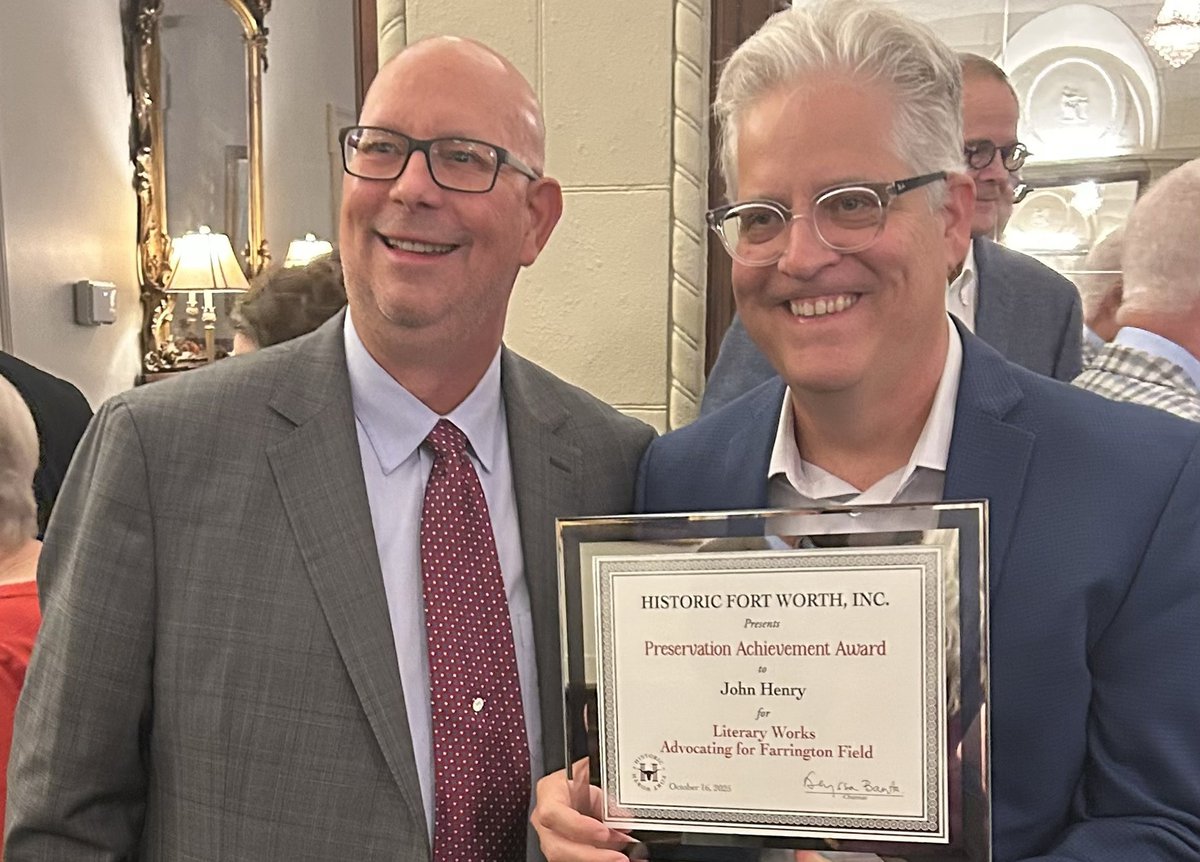Fort Worth Magazine writer and editor John Henry was recognized on Thursday evening by Historic Fort Worth Inc. with a Preservation Achievement Award for his ongoing work chronicling and advocating for one of the city’s most storied landmarks — Farrington Field.
In August, the magazine’s cover story was “A Love Letter to a Stadium: Save It and They Will Come.”
For Henry, the art deco stadium on the corner of University Drive and Lancaster Avenue isn’t just a sports venue. It’s a civic monument.
Farrington Field is more than steel and stone, wrote Henry, who is the Executive Editor of sister publication Fort Worth Inc. Rather, it’s a reflection of Fort Worth’s soul — its schools, its families, its neighborhoods, and its sense of continuity.
Farrington Field, Henry wrote, is “the binding thread in the story of Fort Worth in the last 100 years,” a place that unites the city across age, neighborhood, and background.
Henry’s deep dive into the stadium’s history began years ago, inspired by an imagined visit from Gen. Douglas MacArthur, who once delivered a fiery speech there in 1952. That vision led Henry to explore the stadium’s origins, tracing them back to athletic director E.S. Farrington, whose 1930s dream of a state-of-the-art facility became reality through determination and Works Progress Administration funding.
Henry was nominated for the award by Farrington’s grandson, Evan S. Farrington III.
“Over the last 15 years, John has demonstrated a strong and consistent commitment to keeping the legacy of Farrington Field alive in the community mind of Fort Worth,” Farrington wrote in his nomination letter.
In the same issue, Henry authored “The Case for Keeping Things,” a commentary on the value of preserving a city’s historic edifices.
“Never before have I seen the reason supporting historic preservation stated more clearly and more meaningfully,” Farrington wrote.
Henry’s research culminated in an expansive narrative linking the stadium’s past to present preservation efforts. When the Fort Worth ISD proposed selling the property, Henry’s reporting helped galvanize public awareness and support. Through the efforts of Historic Fort Worth and allies such as E.S. Farrington’s grandson, the stadium was added to the National Register of Historic Places and is now part of a $55 million plan for restoration.
“Old places matter because they’re ours,” Henry says. “Preserving them reminds us who we are and what kind of city we want to be.”

